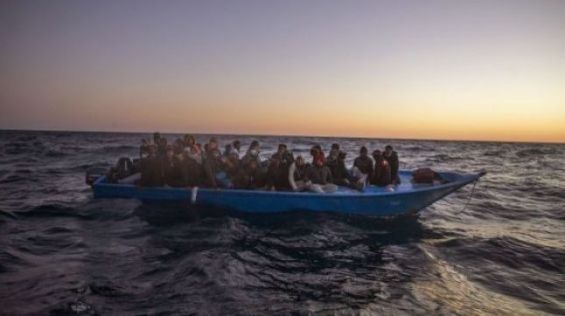The Caminando Fronteras organization has released a new report for 2024, showing a sharp rise in casualties along the western borders between Europe and Africa, with deaths reaching 10,457 people. The migrant advocacy organization described this period as one of the bloodiest since data collection began, recording a daily death rate of 30 cases. Among the victims were 421 women and 1,538 children and adolescents.
According to the report titled «The Right to Life 2024», Atlantic Ocean routes topped the list of the world's deadliest routes, with 9,757 recorded deaths. The report indicated that the Mauritanian route saw a significant increase in casualties, making it a primary destination toward the Canary Islands. Meanwhile, the Algerian route in the Mediterranean Sea ranked second, recording 517 deaths. Additionally, 110 deaths were recorded in the Strait of Gibraltar and 73 on the Alboran route, while 131 boats were lost with all passengers aboard.
According to the organization, 6,829 migrants died on the Mauritanian route, 2,127 others on the Senegal and Gambia route, and 801 victims on the Dakhla and Agadir route.
In Ceuta, swimming remains one of the prominent migration routes, especially for Moroccan and Algerian children and adolescents. While some girls have recently attempted this route, the vast majority of migrants are from Morocco and North Africa. In recent years, young children, some under ten years old, have arrived. The main reasons for this migration include deteriorating social and economic conditions, lack of opportunities, and absence of basic rights.
The report attributes the alarming increase in deaths at Spanish borders to several key factors, primarily «neglect of rescue duty», along with «border expansion towards countries lacking necessary resources» and «absence of effective rescue operations». The report views these factors, alongside «prioritizing migration control over the right to life» and «criminalization of social organizations and families», as contributing to the escalation of drowning incidents and increased casualties. The report also notes that migrants face harsh conditions that drive them to risk their lives due to extreme poverty.
Structural violence against women at borders
The report provides a comprehensive analysis of women's situation on migration routes, particularly on rubber boats between Agadir and Dakhla. Women face various forms of violence during their crossing, such as discrimination, racism, expulsion, and sexual violence. Women often find themselves in harsh conditions, forcing them to beg or work in unstable jobs, in addition to risks associated with human trafficking networks.
An increase has been noted in the number of migrant women traveling via small boats from Senegal, Gambia, and Mauritania, fleeing armed conflicts and climate change effects in impoverished areas. Additionally, more women are crossing from Central and West Africa towards the Balearic Islands via Libya and Tunisia, where they suffer from violence, slavery, ethnic killings, and forced displacement to Algeria.
Children and adolescents facing lack of protection
The report also focused on the increasing number of children and adolescents taking main migration routes to Spain, facing a complete absence of protection and guarantees from authorities. These children are often treated as migrants before being identified as minors, making them targets of political exploitation and hate speech. This has led to serious violations of their rights, with unidentified minors being placed in reception centers in the Canary Islands alongside adults, increasing their risks.
Many youth and adolescents come from northern Morocco, especially from cities like Tetouan, Tangier, and Ksar el-Kebir, as well as rural areas like Beni Ahmed, and other cities such as Salé, Fez, Meknes, and Kalaat Sraghna. While geographic proximity previously encouraged border crossing, today social media plays a crucial role in the decision to migrate to Europe.
The report highlighted the suffering of families searching for their missing loved ones on the western borders between Europe and Africa. Despite some progress in receiving reports and some good practices, these families face numerous obstacles in exercising their rights, particularly regarding difficulties in obtaining DNA samples or filing reports. This situation re-traumatizes families and makes them feel their loved ones are considered second-class victims. In the absence of guarantees, families become vulnerable to exploitation by extortion gangs.





 chargement...
chargement...













